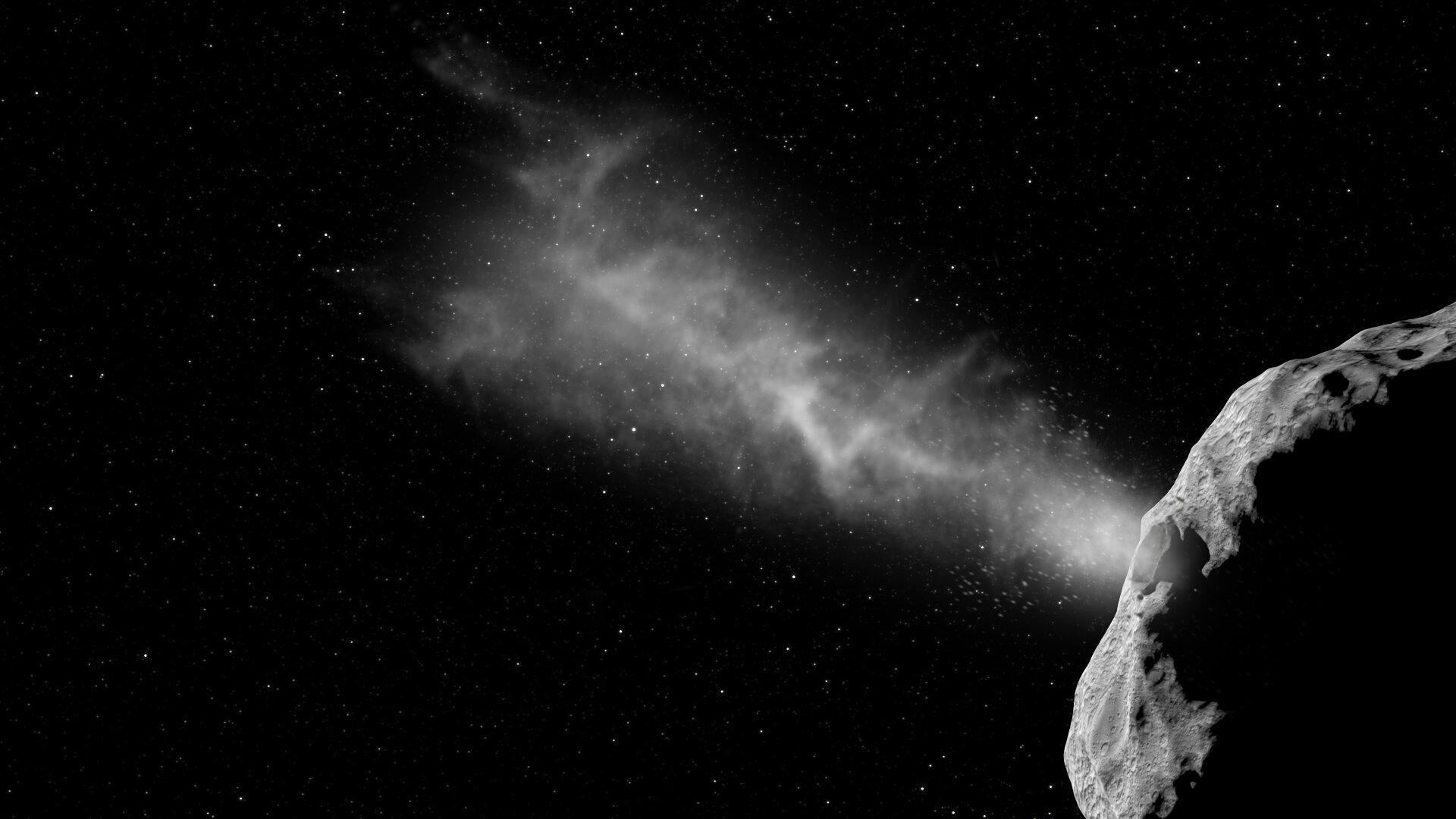On September 26th, at 23:14 UTC (07:14 PM EST; 04:14 PM PST), NASA’s Double Asteroid Redirect Test (DART) spacecraft successfully struck the 160-meter (525 ft) moonlet Dimorphos that orbits the larger Didymos asteroid. The event was live-streamed all around the world and showed footage from DART’s Didymos Reconnaissance and Asteroid Camera for Optical navigation (DRACO) as it rapidly approached Dimorphos. In the last few seconds, DART was close enough that individual boulders could be seen on the moonlet’s surface.
About 38 seconds after impact, the time it took the signal to reach Earth, the live stream ended, signaling that DART had successfully impacted Dimorphos and was destroyed in the process. Meanwhile, teams of astronomers stretching from the Indian Ocean to the Arabian Peninsula watched the impact with their telescopes. One, in particular – the Les Makes Observatory on the island of Le Reunion in the Indian Ocean – captured multiple images of the impact. These were used to create a real-time video and show the asteroid brightening as it was pushed away, followed by material ejected from the surface.
The observation campaign was organized by the ESA’s Planetary Defence Office (PDO) and coordinated by the Agency’s Near-Earth Object Coordination Centre (NEOCC). This campaign was one of several worldwide that coincided with DART’s successful test of the kinetic impact method. While not all observation stations were successful due to cloud cover, technical problems, and other issues, the ESA campaign acquired several stunning images showing the kinetic impactor hitting its target and what immediately followed.
“Something like this has never been done before, and we weren’t entirely sure what to expect,” said Marco Micheli, an Astronomer at the NEOCC. “It was an emotional moment for us as the footage came in.”
As you can see from the video (posted above), the asteroid immediately started brightening upon impact and was many times brighter within seconds. This indicated that the moonlet’s trajectory was altered, causing more sunlight to be reflected from its surface. Less than a minute after impact, a cloud of ejected material became visible as it drifted into the path of direct sunlight and began reflecting it. The time-lapse video shows (in thirteen seconds) what took place over roughly half an hour. As Dora Föhring, another NEOCC astronomer, adds:
“This was the conclusion of weeks of discussions, meetings, accurate planning and observational design by our team, together with local observers and scientists at all our collaborating stations. This fantastic campaign has produced data that our astronomers, together with the whole DART collaboration, will now begin to analyse to extract valuable scientific information on the effects of the impact.”
To determine how much the moonlet’s orbit has been altered, astronomers will measure its light curve over time using ground-based telescopes. Observations will also be made using space-based telescopes, including the venerable Hubble and the James Webb. This data will be used to calculate any changes in Dimorphos’ period as it continues to orbit Didymos, which will confirm that the kinetic impact method is an effective means of altering the trajectory of asteroids and preventing them from impacting Earth.
The ESA also plans to mount a follow-up mission with the Hera mission, which will launch in October of 2024 and rendezvous with the double-asteroid system in December 2026. Once it arrives, Hera will be the first spacecraft to rendezvous with a double-asteroid system and perform a detailed post-impact survey. Ian Carnelli, the Hera Mission Manager, said:
“The results from DART will prepare us for Hera’s visit to the Didymos binary system to examine the aftermath of this impact a few years from now. Hera will help us understand what happened to Dimorphos, the first celestial body to be measurably moved by humankind, and ultimately to protect ourselves from space rocks that could one day do the same.”
Further Reading: ESA

